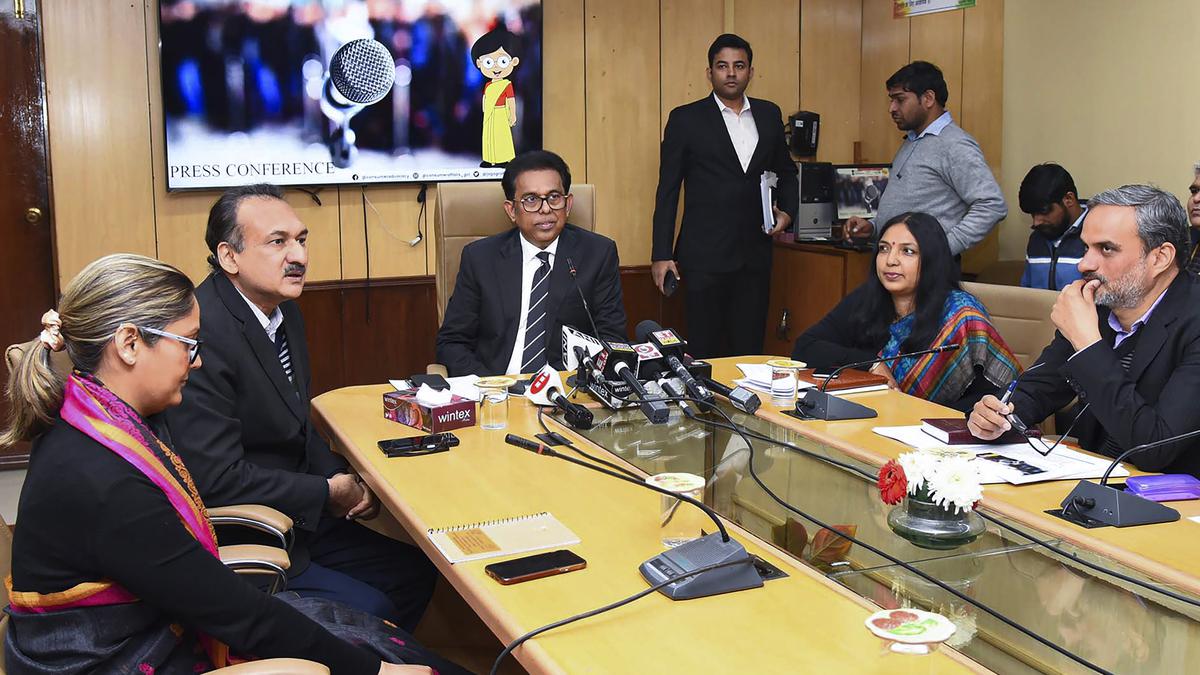Centre issues guidelines to social media influencers to regulate promotions
The Centre has released on Friday the endorsement guidelines for celebrities and social media influencers that mandates compulsory disclosure of monitory or material benefits of a product or a brand they are promoting through their social media platforms. Failing to do so will attract a penalty up to ₹ 50 lakh.
Releasing the guidelines at a press conference, Union Consumer Affairs Secretary Rohit Kumar Singh said the disclosures must be prominently and clearly displayed in the endorsement and terms such as ‘advertisement’, ‘sponsored’ or ‘paid promotion’ should be used for all sort of endorsements. The step, he said, is after considering the increased use of social media for promotional activities that goes beyond advertisements or advertorials in print or electronic media.
Also read | The rise of social media influencers
The guide ‘Endorsements Know-hows!’ is for celebrities, influencers and virtual influencers on social media platforms and also aims to ensure that individuals do not mislead their audiences when endorsing products or services and that they are in compliance with the Consumer Protection Act and any associated rules or guidelines. “With the increasing reach of digital platforms and social media, such as Facebook, Twitter and Instagram, there has been a rise in the influence of virtual influencers, in addition to celebrities and social media influencers. This has led to an increased risk of consumers being misled by advertisements and unfair trade practices by these individuals on social media platforms,” the Union Consumer Afffairs Ministry said in a release.
The guidelines specify that disclosures must be prominently and clearly displayed in the endorsement, making them “extremely hard to miss”. Benefits and incentives, and monetary or other compensation, trips or hotel stay, media barters, coverage and awards, free products with or without conditions, discounts, gifts and any family or personal or employment relationship come under material benefits according to the guidelines. “Endorsements must be made in simple, clear language and terms such as ‘advertisement,’ ‘sponsored,’ or ‘paid promotion’ can be used. They should not endorse any product or service and service in which due diligence has been done by them or that they have not personally used or experienced,” the Centre said.
If there are any violations, the penalty prescribed for misleading advertisements under the Consumer Protection Act 2019 will be applicable. In that case, the Central Consumer Protection Authority (CCPA) can impose a penalty of up to ₹ 10 lakh on manufacturers, advertisers and endorsers and for repeated offences, a penalty of up to ₹ 50 lakh can be imposed. The CCPA can also prohibit the endorser of a misleading advertisement from making any endorsement for up to one year and for subsequent contravention, prohibition can extend up to three years.
Mr. Singh said the size of the social media influencer market in India in 2022 was of the order of ₹ 1,275 crore and by 2025, it is likely to rise to ₹ 2,800 crore with a compound annual growth rate of about 19-20%. “The social media influencer of substance, which means those having good number of followers, are in excess of one lakh in the country,” Mr. Singh said.
How to disclose
The new guidelines have specified who all need to disclose, when to disclose and how to disclose.
Individuals/groups who have access to an audience and the power to affect their audiences’ purchasing decisions or opinions about a product, service, brand or experience, because of the influencer’s/celebrity’s authority, knowledge, position, or relationship with their audience will have to disclose.
The disclosure should happen “when there is a material connection between an advertiser and celebrity/influencer that may affect the weight or credibility of the representation made by the celebrity/influencer”, Mr. Khare said.
She said the disclosure should be in such a manner that it is “hard to miss” and should be in simple language.
The disclosures should be placed in the endorsement message in such a manner that they are clear, prominent and extremely hard to miss. Disclosures should not be mixed with a group of hashtags or links.
In endorsement in a picture, disclosures should be superimposed over the image enough for viewers to notice. In video, disclosures should be placed in the video and not just in the description and they should be made in both audio and video format.
In the case of live stream, disclosures should be displayed continuously and prominently during the entire stream.
On limited space platforms like Twitter, terms such as ‘XYZAmbassador’ (where XYZ is a brand) are also acceptable, she said.
The secretary said that these guidelines are being issued under the overall ambit of Consumer Protection Act and one of the main underlining principle of the law is prevention of unfair trade practice.
“There are many ways in which unfair trading practices take place, one of the important unfair trading practice is the menace of misleading advertisements, by trying to sell something which is not exactly as it is being portrayed in the ad.
“While it has been ably handled in the conventional media — which is TV, print and radio, the social and digital media platforms are turning out to be different ball game,” Mr. Singh said.
– PTI
ASCI welcomes the endorser guidelines
Manisha Kapoor, CEO & Secretary General, ASCI says, “ASCI welcomes the endorser guidelines issued by the Ministry of Consumer Affairs. We are happy to note that they are aligned with ASCI’s influencer guidelines, 2021. Influencer violations comprise almost 30% of ads taken up by ASCI, hence this legal backing for disclosure requirements is a welcome step. The Ministry had been in touch with ASCI to review the various global guidelines on influencers.”
For all the latest business News Click Here

